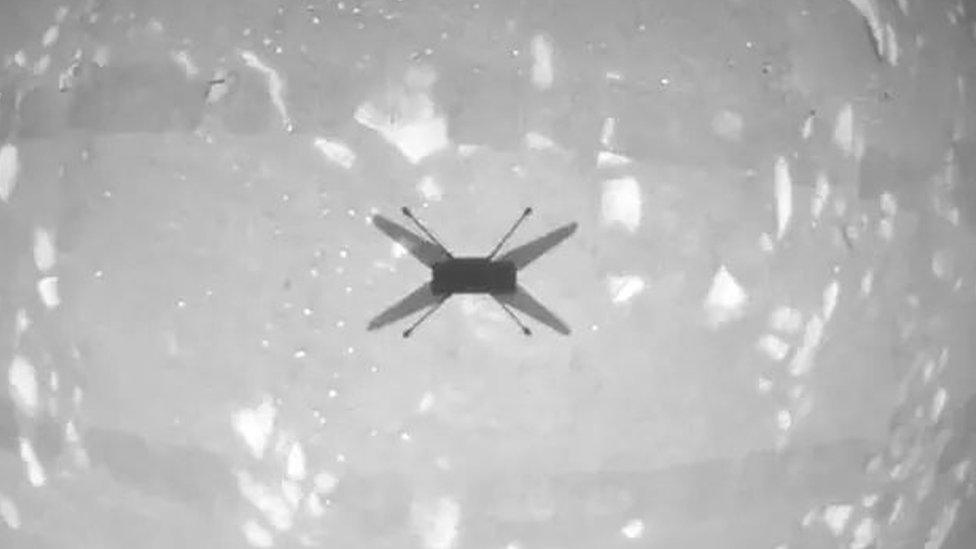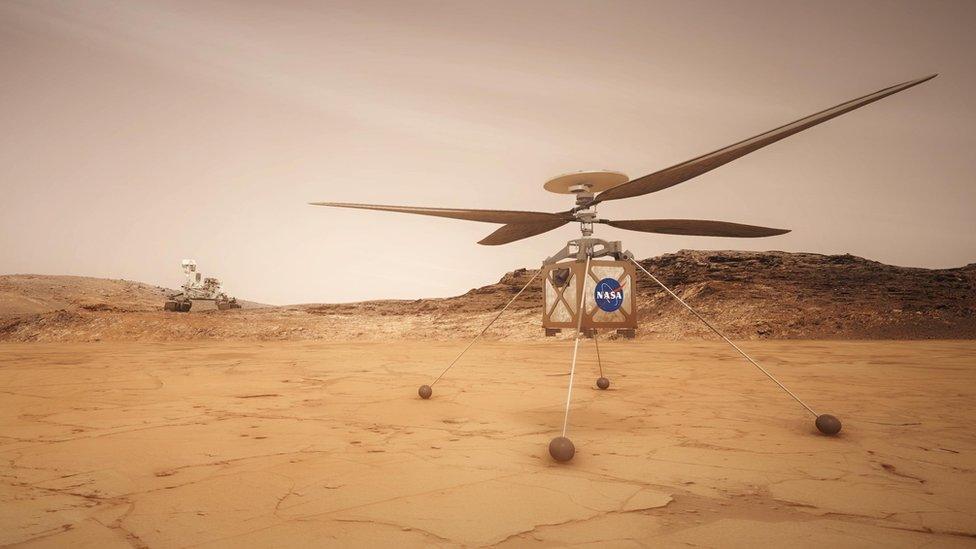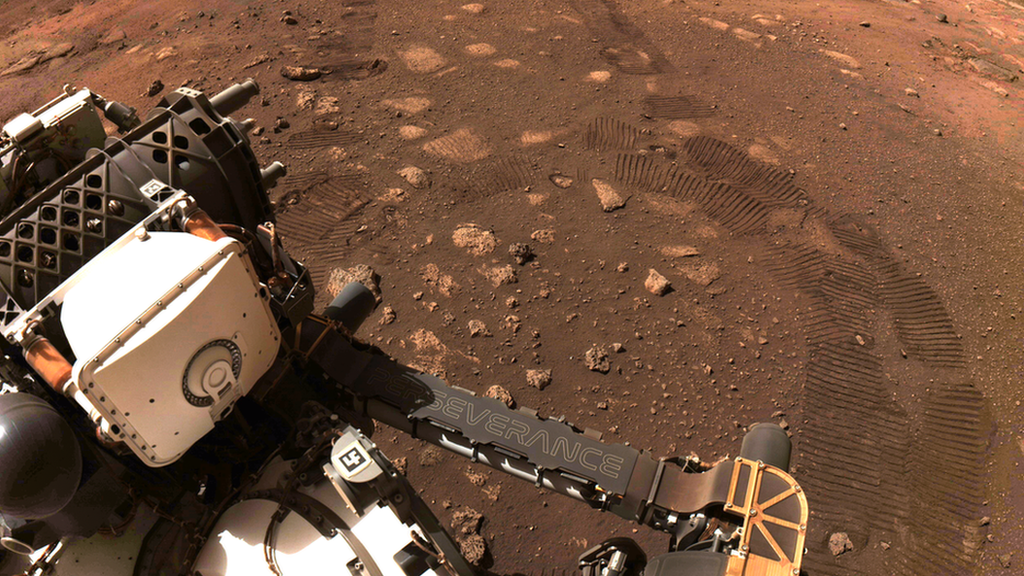'Just keep flying': Mars-copter goes on wobbly flight after malfunction
- Published
- comments

Last month Nasa's Mars helicopter celebrated its first flight - but this week it was a different story, after a navigation error sent it lurching from side to side before it managed to land safely.
This has been the first major problem for the copter named Ingenuity, since it took to the Martian skies last month.
A built-in system to provide extra stability "came to the rescue", with the helicopter landing within five metres of its intended touchdown site.
The helicopter first got into difficulties a minute into its sixth test flight on Saturday when it was about 10 metres from the planet's surface.
It navigates by using an on board camera, but after one of the pictures taken failed to register in the system the aircraft became confused about its location.
It began tilting back and forth by as much as 20 degrees and suffered power consumption spikes, according to the helicopter's chief pilot Havard Grip.
Sounds dramatic!
Nasa Ingenuity: First ever helicopter flight on Mars
But it doesn't sound like Nasa were too worried about the aircraft, with them team posting a tweet saying: "Just keep flying 🚁".
Engineers have now spent several days working out and trying to fix the problem.
According to chief pilot Havard Grip the slight dodgy flight path wasn't necessarily a bad thing.
Grip wrote: "Ingenuity muscled through the situation, and while the flight uncovered a timing vulnerability that will now have to be addressed, it also confirmed the robustness of the system in multiple ways.
"While we did not intentionally plan such a stressful flight, Nasa now has flight data probing the outer reaches of the helicopter's performance envelope."

This is one of the images taken during the helicopter's sixth flight
Ingenuity became the first aircraft to make a powered flight on another planet in April, two months after landing on Mars with Nasa's rover Perseverance.
It was originally only due to stay on the planet for 30 Martian days, but Nasa was so impressed by the $85m tech demo that it has extended its mission by at least a month.
The helicopter has now successfully made its first five flights, each one more challenging than before.
- Published2 May 2021

- Published6 March 2021

- Published19 April 2021

